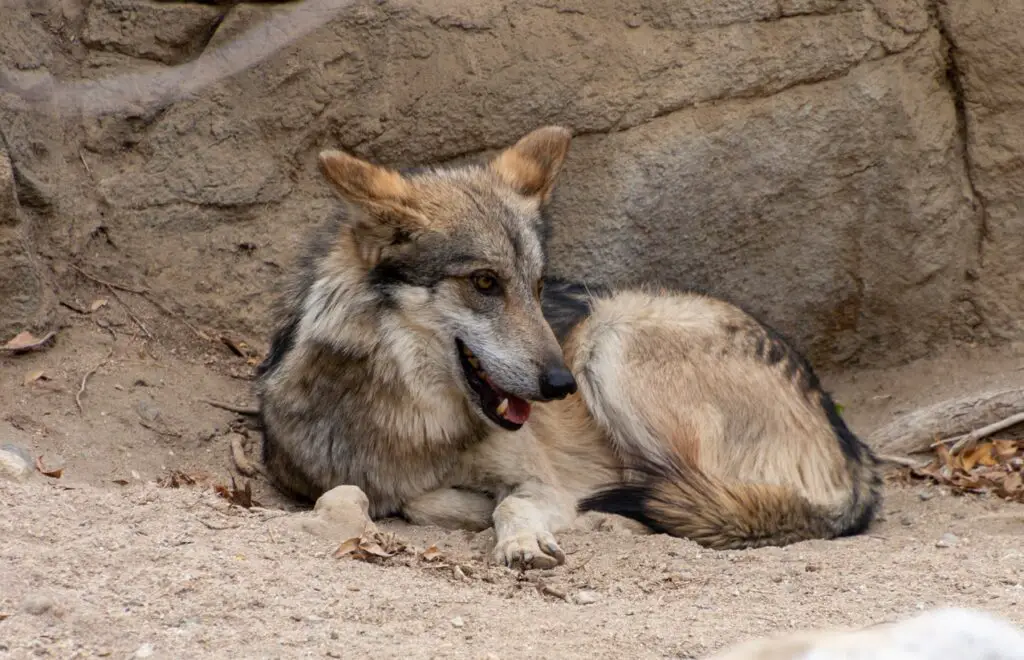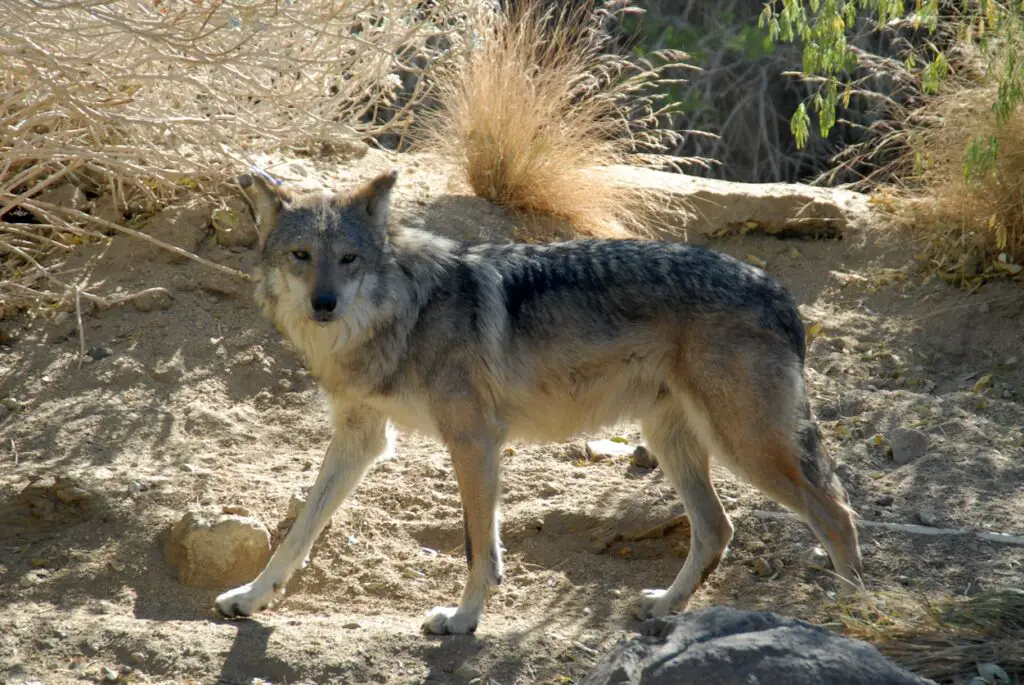The Mexican wolf was hunted to extirpation in North America during the mid-1900s. Mexican wolf pups were dug out of their dens, and adult Mexican wolves were poisoned, trapped, and hunted.
After being listed on the Endangered Species list in 1976, attempts were made to prevent the complete extermination of the Mexican wolf.
From 1977 to 1980, five wild Mexican wolves were captured, and a captive breeding program was initiated. In 1998, the captive-bred offspring of these five Mexican wolves were released into parts of Arizona and New Mexico in the hopes they would recolonize their former range.

What is a Mexican Wolf?
The Mexican wolf (Canis lupus baileyi), also known as the Lobo, is a subspecies of gray wolf native to southeastern Arizona and southern New Mexico in the United States and northern Mexico. It is the smallest, rarest, and most genetically different subspecies of the gray wolf in North America.
General Description of the Mexican wolf.
Mexican wolves typically weigh 55 – 85 pounds, measure about 5 ½ feet from nose to tail, and stand 26 to 32 inches at the shoulder. They have richly colored coats of yellowish, gray, rust, and black. Solid single colors like white or black (as with other subspecies of the gray wolf) do not occur in Mexican wolves.
Mexican wolf lifespan and social structure.
A mated pair of Mexican wolves can produce one litter of pups yearly. The average size of a Mexican wolf litter is 4-8 pups. Puppies will usually stay with the alpha male and female for two years before dispersing and seeking out another unrelated (for genetic reasons) pack or mate.
Mexican wolves breed in February and give birth in April or early May to four to six pups after a 63-day gestation period. Despite the near-constant protection of their parents, Mexican wolf pups can have a mortality rate of 50%. Starvation, malnutrition, disease, and predators contribute to the death of most of these pups.
Ongoing attempts to increase the Mexican wolf population by the Interagency Field Team (IFT) in 2021 resulted in the following:
“In 2021, the IFT placed a record 22 captive-born pups into seven wild dens (a process called “cross fostering”) to boost the genetic diversity in the wild population. These cross-fostered pups are included in the minimum of 144 pups recorded for the year. The IFT has since captured and collared two of these pups and will continue efforts in 2022 to document others that may have survived. With these newly collared pups, the known number of fostered wolves alive is 14.”

Mexican wolf communications.
Unlike coyotes, Mexican wolves sometimes hunt in packs with other unrelated (genetically) wolves. Within a family unit, wolves work together to protect their territory, raise their young, and hunt larger prey. They communicate with each other by howling, barking (usually only by juveniles), whimpering, and snarling.
Wolves also communicate with each other using body language; even humans can easily translate it. For example, a subordinate Mexican wolf approaches a dominant pack member by tucking its tail between its legs, pinning its ears back, and slinking toward it—ready to submit.
Friendly social equals and mates approach each other with raised heads, tails, and ears. Conversely, disputes between equals, non-pack members, and other threats are greeted with growls and displayed fangs.
Mexican wolf howls are longer than coyote howls and noticeably smoother and more profound in their tone. The information being communicated in these howls, however, is the same for each animal. For example, who is calling, where they are, and the sender’s mood (threatened or unthreatened).
Mexican gray wolf hunting techniques and prey.
Mexican wolves hunt cooperatively and as a family (pack) to bring down larger prey such as elk, mule, and white-tailed deer. Mexican wolves stampede and chase their game, often over large distances, swiftly taking the young and the weak. Mexican wolves also occasionally kill ranged and penned livestock, mainly calves and other young. Mexican wolves are also carrion scavengers.
The future of the Mexican wolf.
Reintroduction efforts and species protection regulations remain in place.
A 2021 census also revealed that there are now approximately 186 Mexican gray wolves in the American Southwest, with about 72 wolves in Arizona and 114 in New Mexico.


